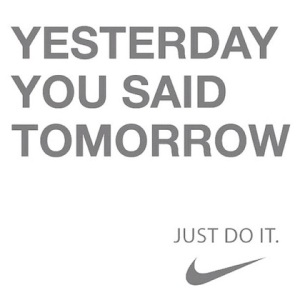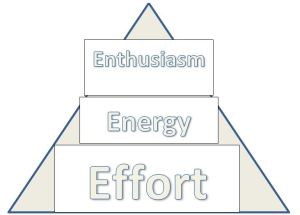What would you rather do more of – something you are good at doing? Or something your manager says you are weak at doing?
Throughout my professional life, manager after manager provided “employee performance reviews” on an annual basis. Most were supposed to also have “interim reviews” but those were typically self assessments where I was challenged to be as hard on my own performance as possible. In those annual reviews, and it didn’t matter if it was a year when I was a highly ranked individual contributor or a year when my team and I “under performed” to the company goals – the reviews were pretty much the same – here are the areas you underperformed and here are the weaknesses I see in your performance that you need to focus on…
I see the same thing in employee-employer relationships and performance management. Too often employee performance plans are committed to solely developing the employee weaknesses. Trying to change adult behavior, turning a “weakness” into a “strength” – well, it’s next to impossible without the right motivation.
No one was offering me the right environment to let me focus on my strengths, leverage what I was best at, in order to move the dial on team and personal production.
Imagine though if every employee performance plan placed a focus on the strengths of the employee – “you are good at these things, let’s find ways for you to spend MORE time on these elements and reduce the time you spend on these elements.” Fantasy land? Maybe. But more likely it takes an investment by leaders and managers to objectively identify each team members’ strengths and then determine how those strengths can best support the team objectives.
In their series of books that includes Strengths Based Leadership, Tom Rath and Barry Conchie do a fantastic job of getting to the objective truths of strengths in behaviors, motivations, and interests.
“… we have studied leaders who built great schools, created major nonprofit organizations, led big businesses, and transformed entire nations. But we have yet to find two leaders who have the exact same sequence of strengths. While two leaders may have identical expectations, the way they reach their goals is always dependent on the unique arrangement of their strengths.”
Effective leaders:
- Effective leaders invest in their strengths (you have to OBJECTIVELY define your own strengths to invest in them)
- Great leaders surround themselves with highly competent people (from interviewing and then employee development)
- Effective leaders understand the needs of their followers in depth (relationships and engagement)
To get to the heart of effective leadership, the authors looked at why leaders that focused on strengths had a significantly higher employee engagement (73%) compared those leaders that fail to focus on strengths (9%). Too often leaders focus on either their OWN strengths, or they focus on their followers weaknesses (“we need a performance plan to address your weaknesses!”), rather than leveraging strengths based systems.
The authors found four domains of highly effective teams:
- Executing – When teams are good at executing, they can conceive a new idea and bring it to fruition quickly and efficiently.
- Influencing – Influencing is a matter of someone speaking up and making sure the right point of view is presented to these broader constituencies.
- Relationship building – Relationship building is all about strengthening the organization, synergy is created meaning the output ends up being greater than the sum total of the various inputs contributed.
- Strategic thinking – Teams need to have some people in them who can stretch their thinking and help them work towards a much brighter future.
Based on these domains, the Gallup Organization developed 34 “themes” to clarify individual interests, behaviors and motivations of team members. Only when you know the individual behaviors and motivations – IN AN OBJECTIVE EVALUTION – can a leader maximize the potential collective wisdom of the team. Much like sales, marketing, staffing, budgeting, etc – it takes both the knowledge AND systematic implementation of the tools to make them effective. Knowing your own strengths, or weaknesses, or those of your team, is close to useless if you are not maximizing those in a system to build strong team production.
And in the end, how much better – happier, more productive, more efficient, more creative – would every organization become if people were allowed to function in and focus on their strengths, rather than always being directed toward improving their weaknesses…
“The best leaders get to live on. Think for a moment about the leaders you respect – whether they lead countries, organizations, communities, or families – who continue to live on because of the way they have shaped your thoughts and beliefs. Even though you may not notice it in the moment, the most effective leaders forever alter the course of your life. Perhaps the ultimate test of a leader is not what you are able to do in the here and now – but instead what continues to grow long after you’re gone.”


